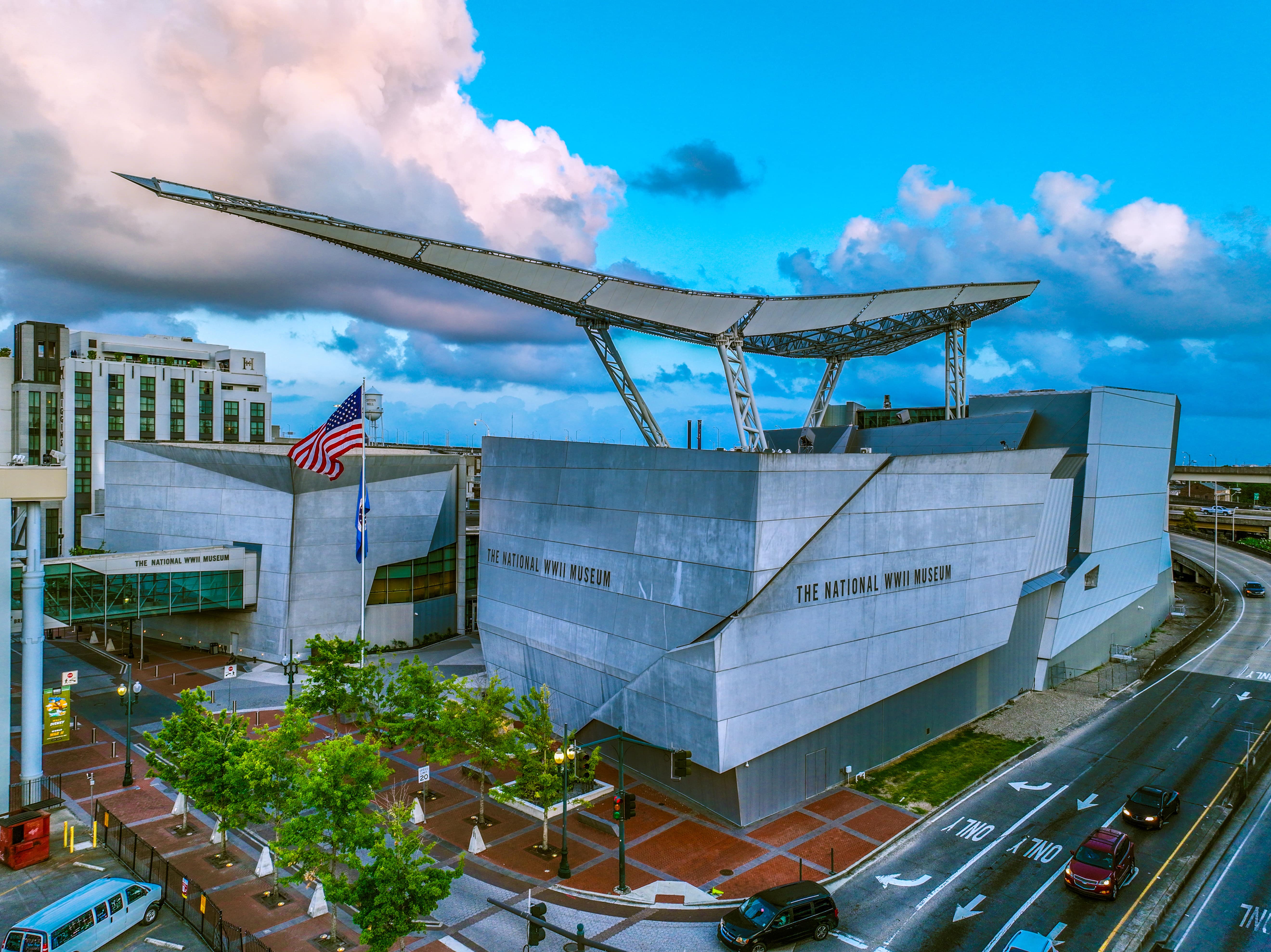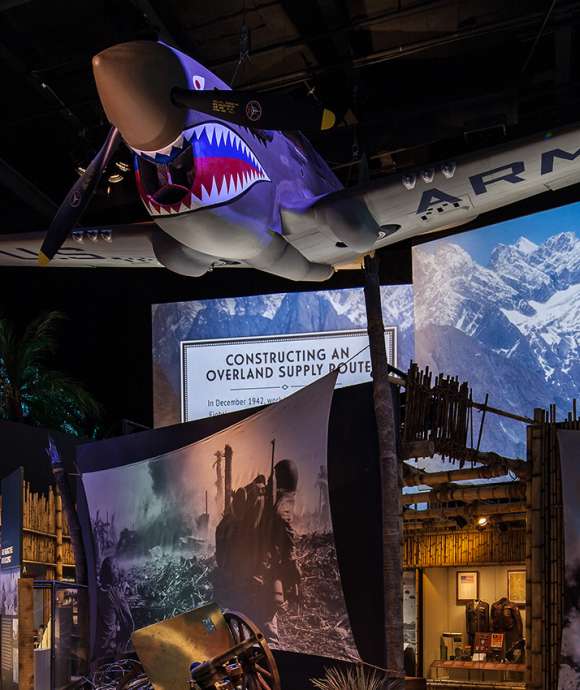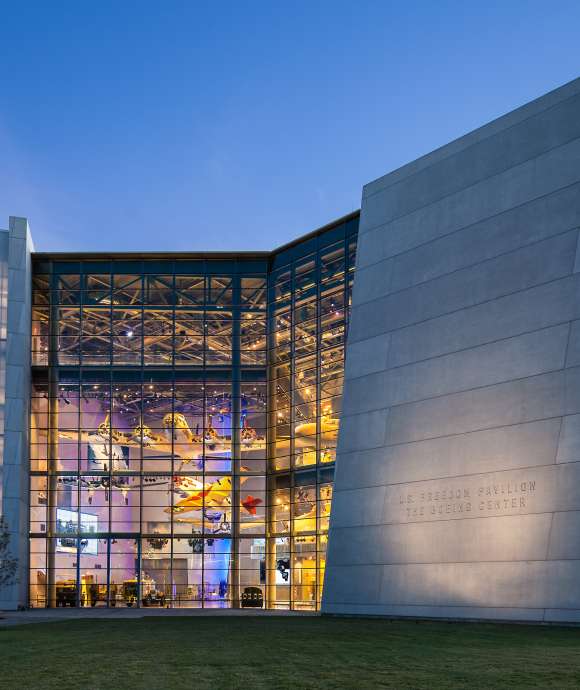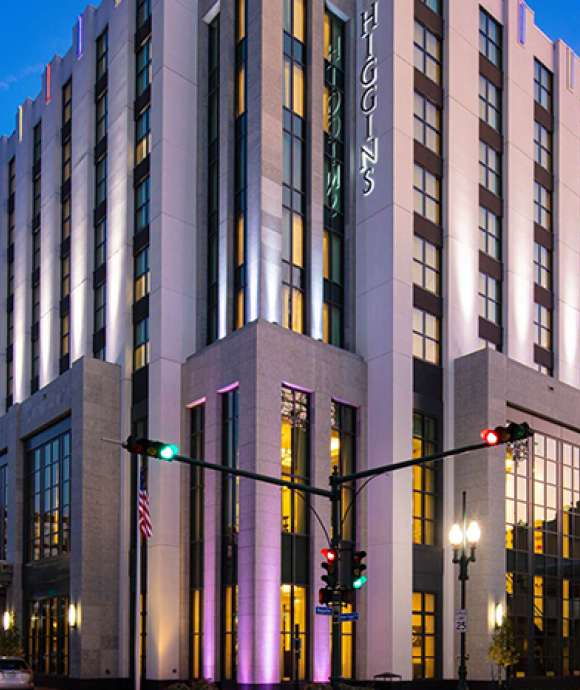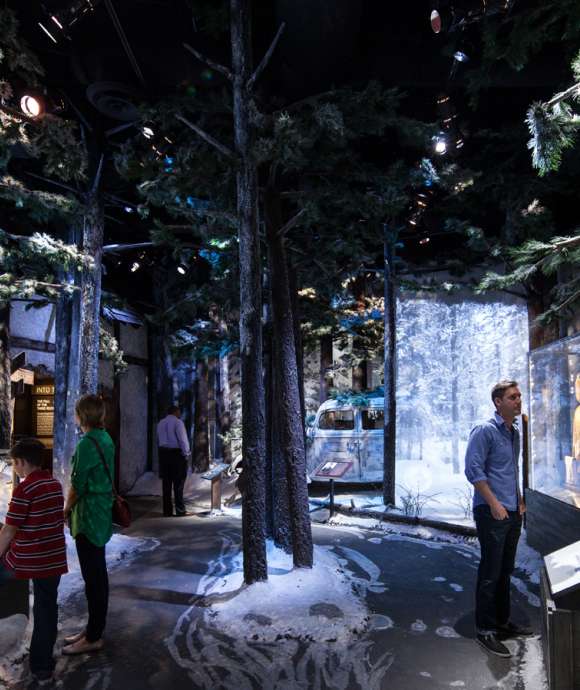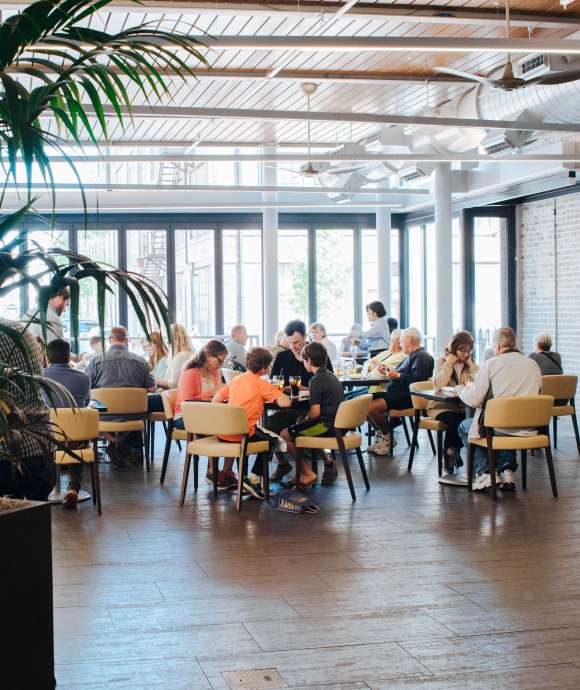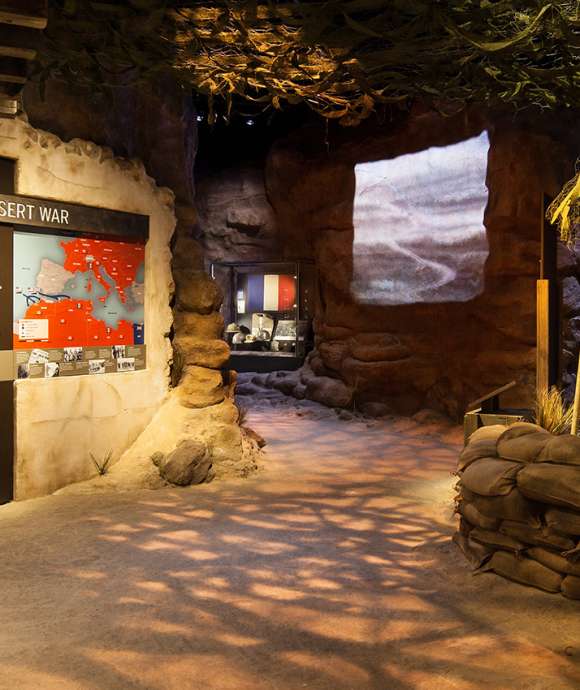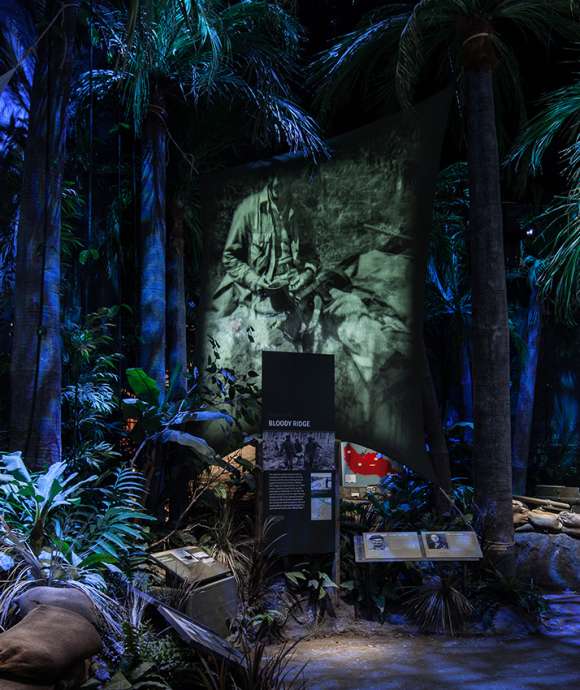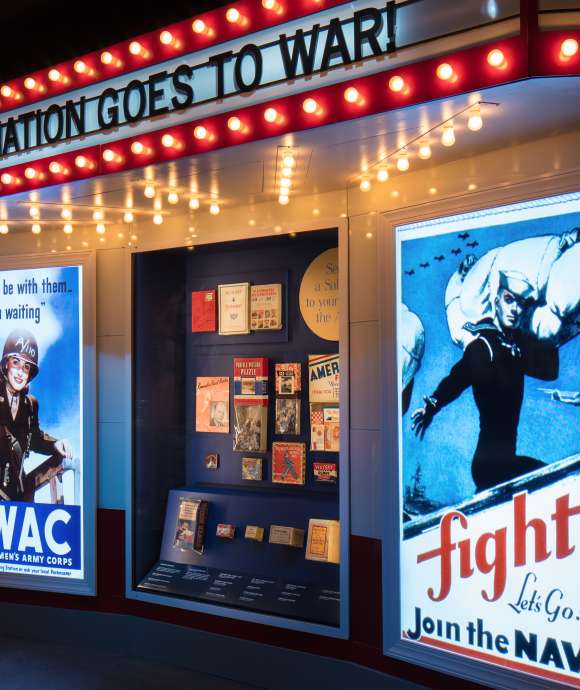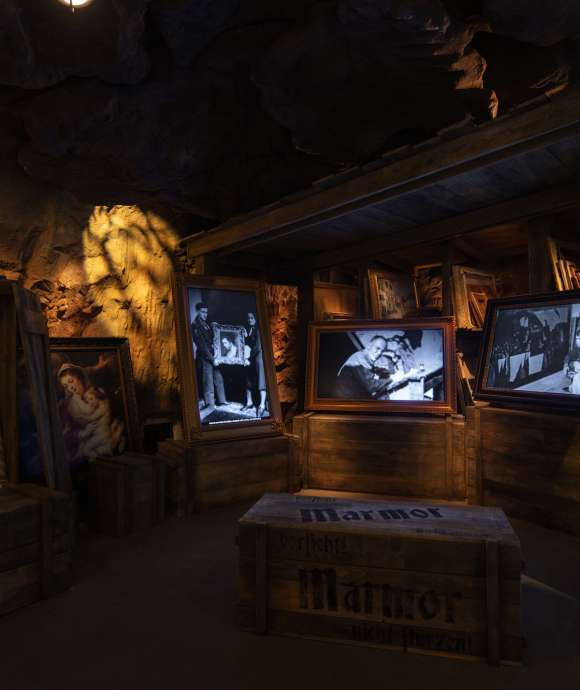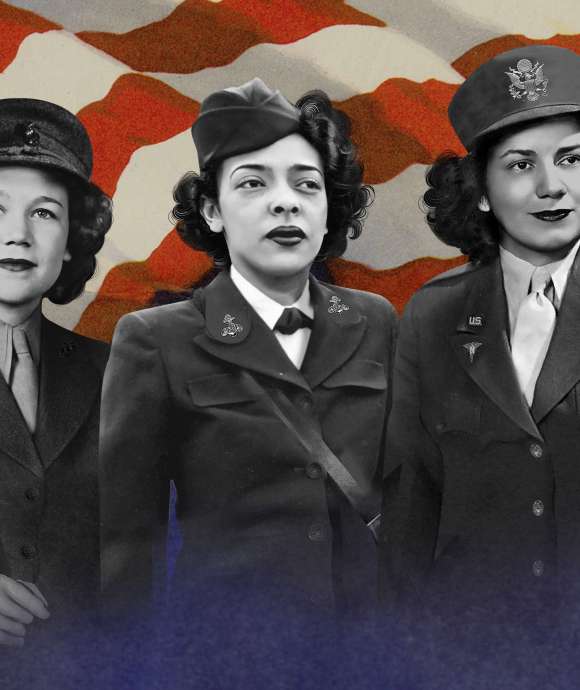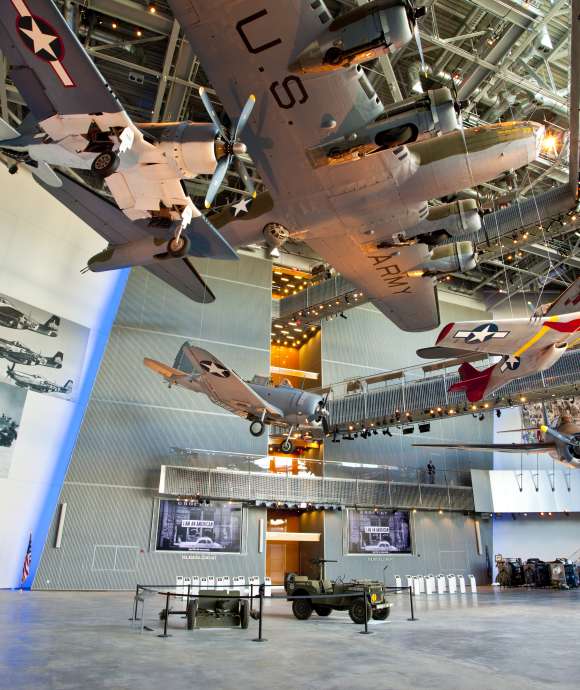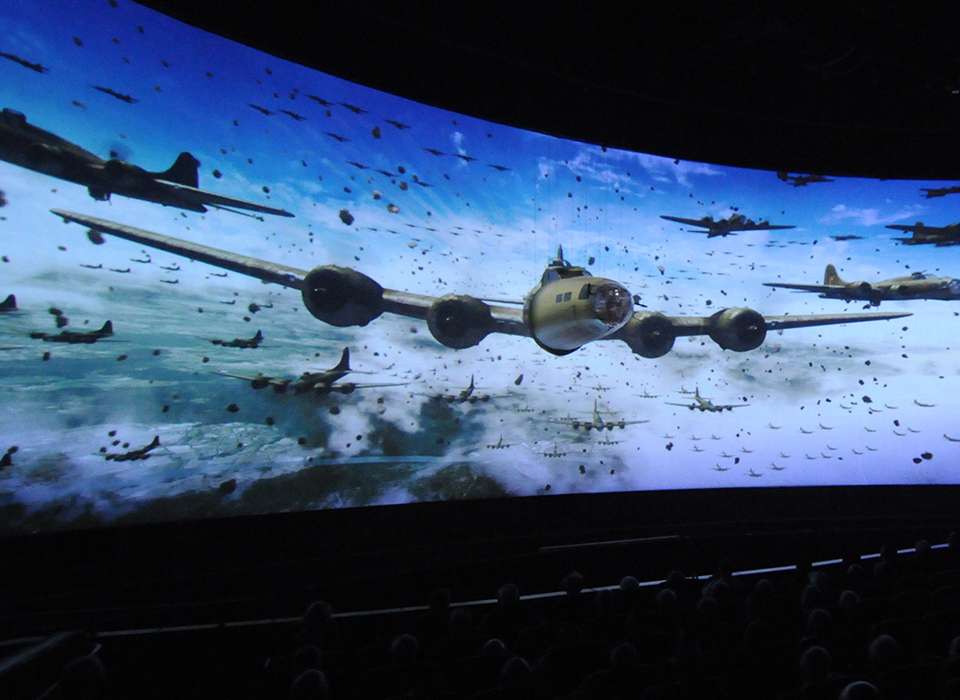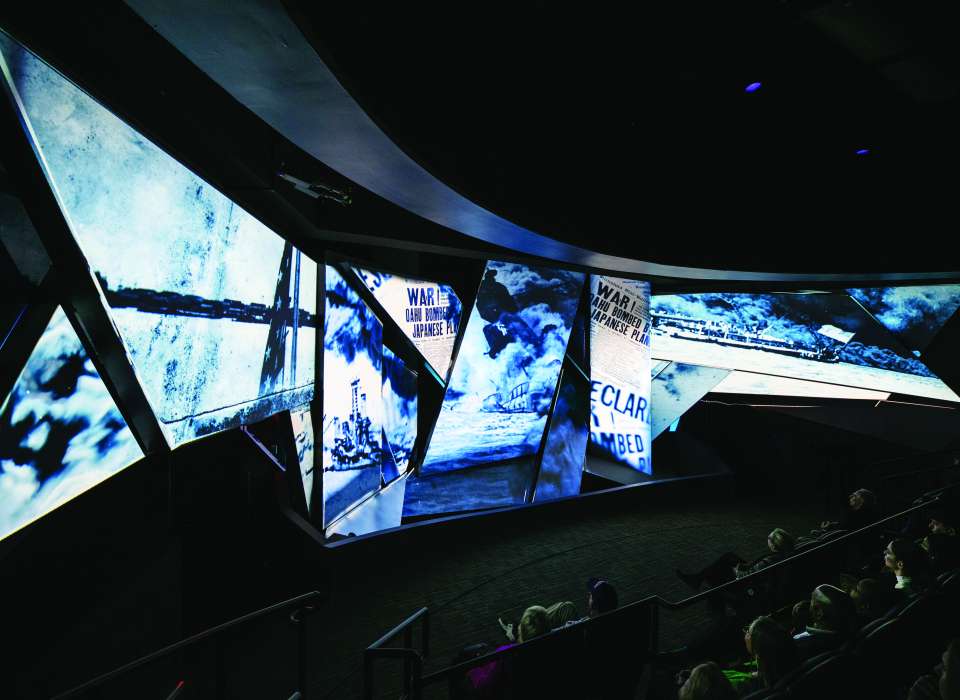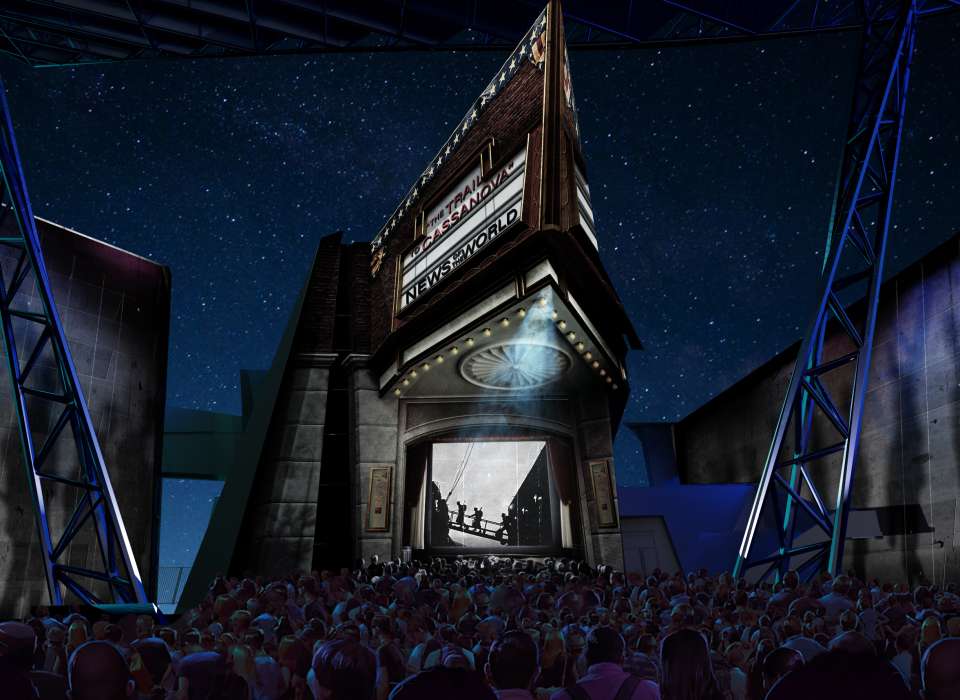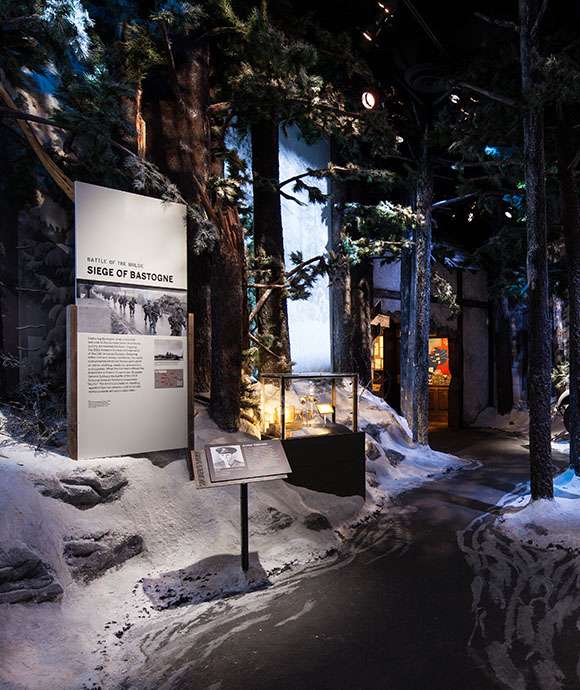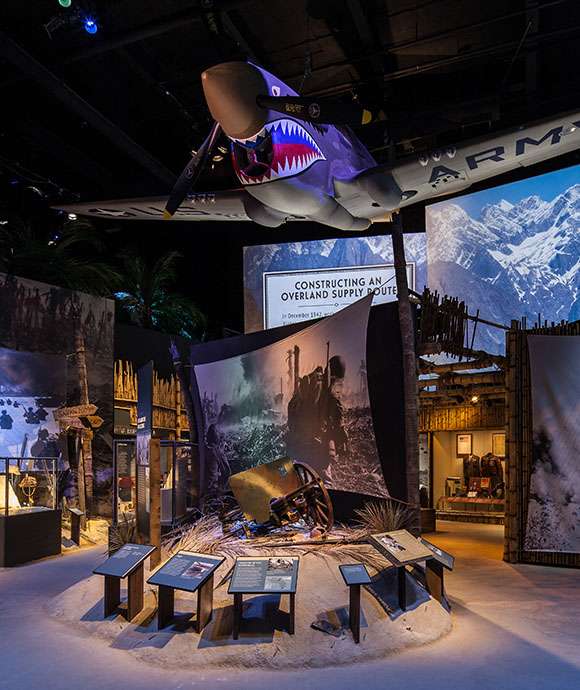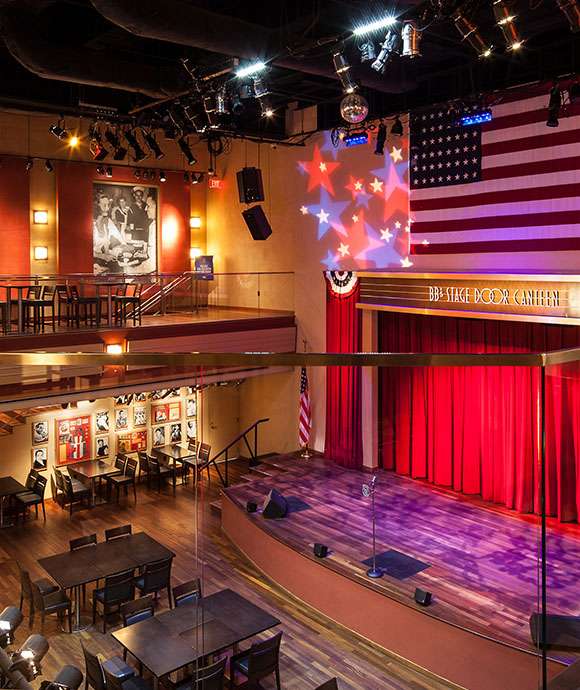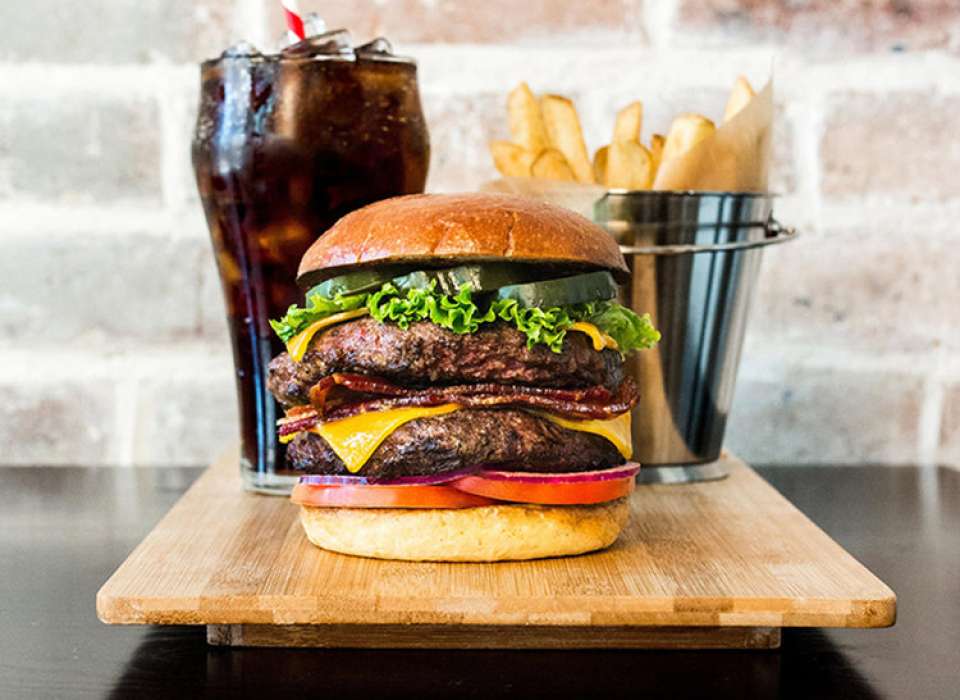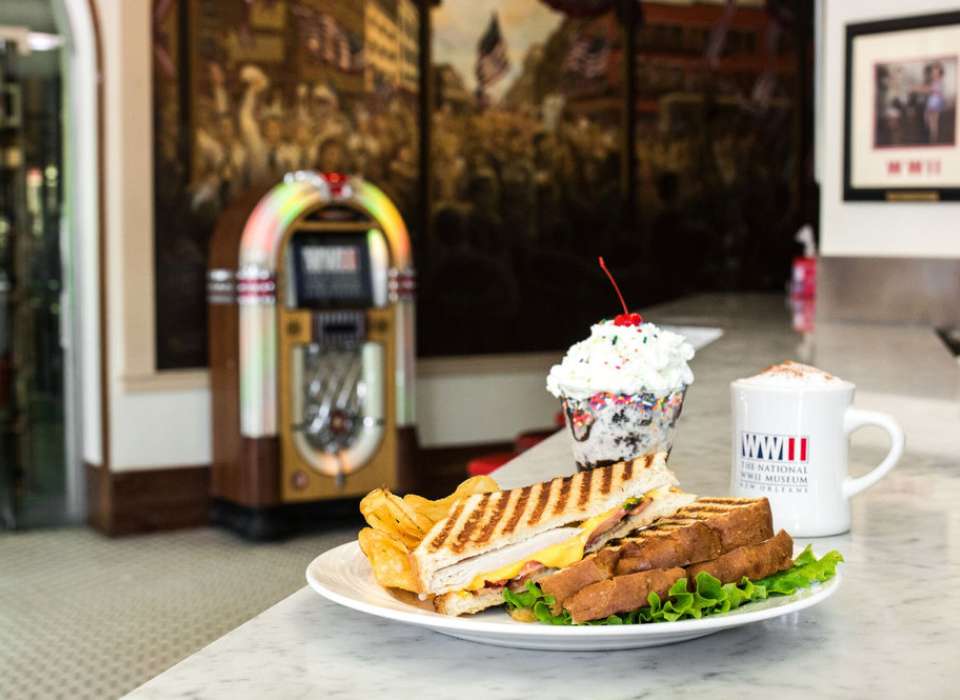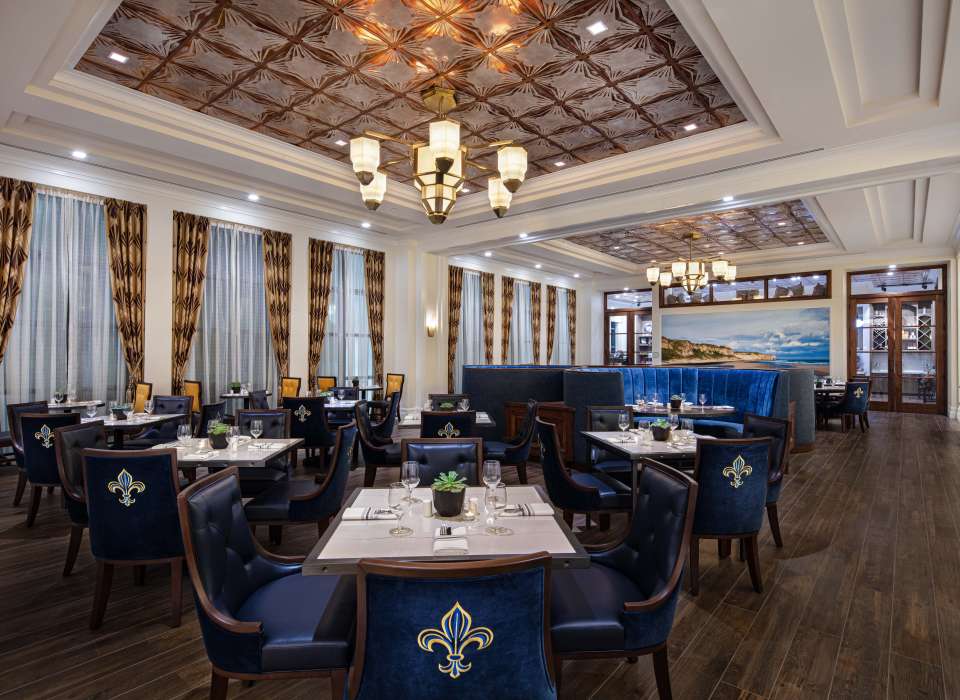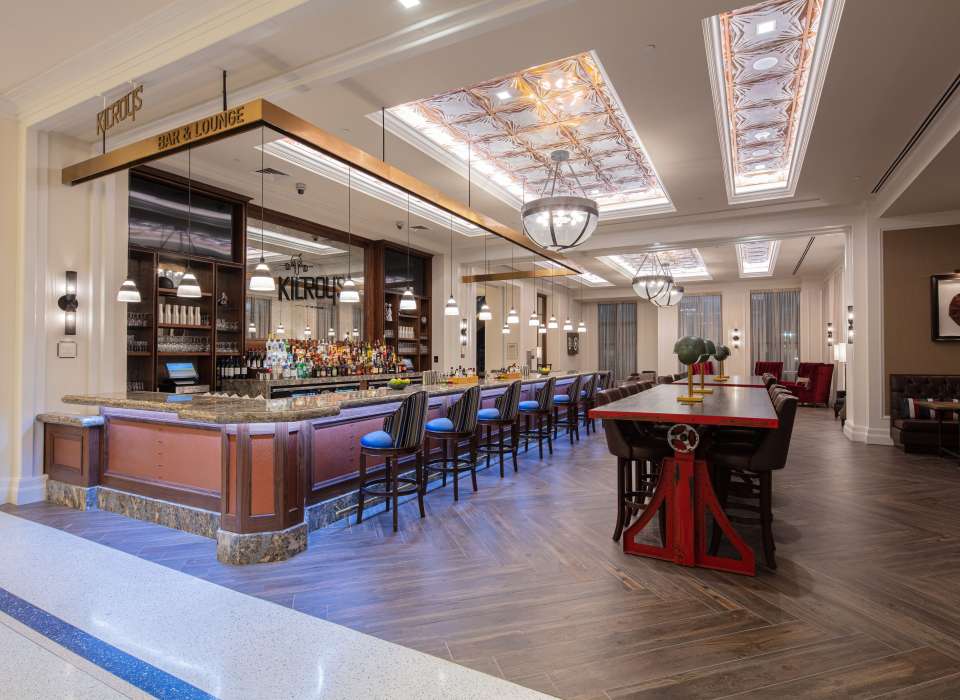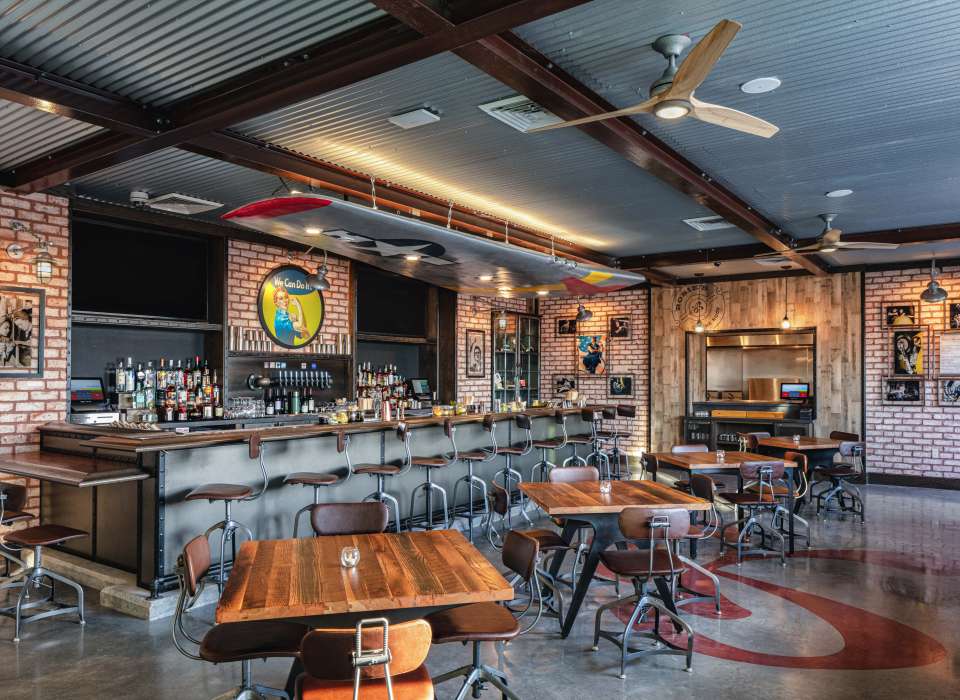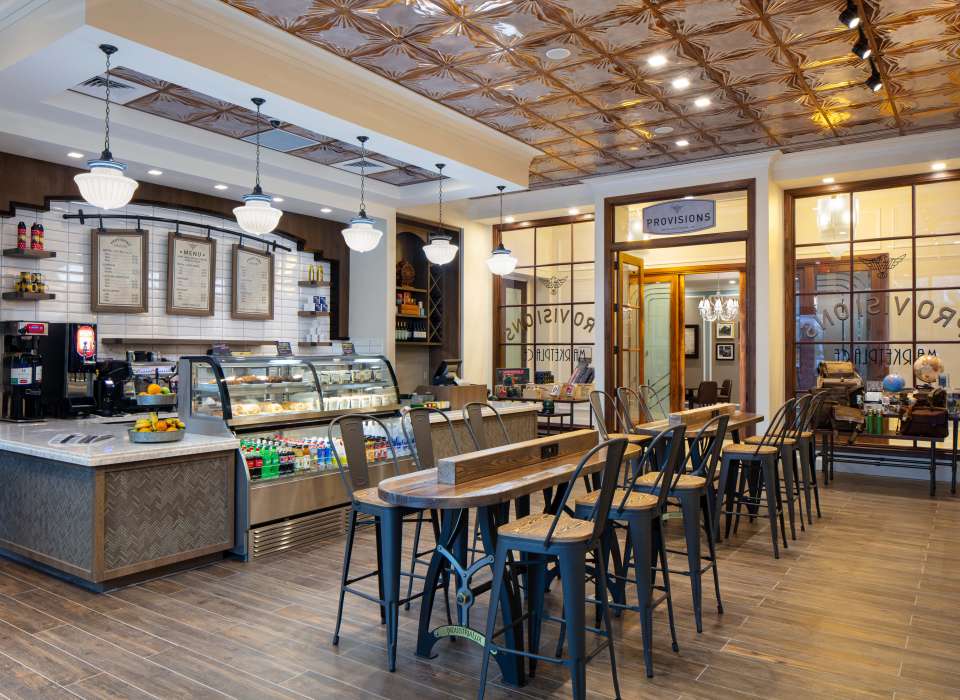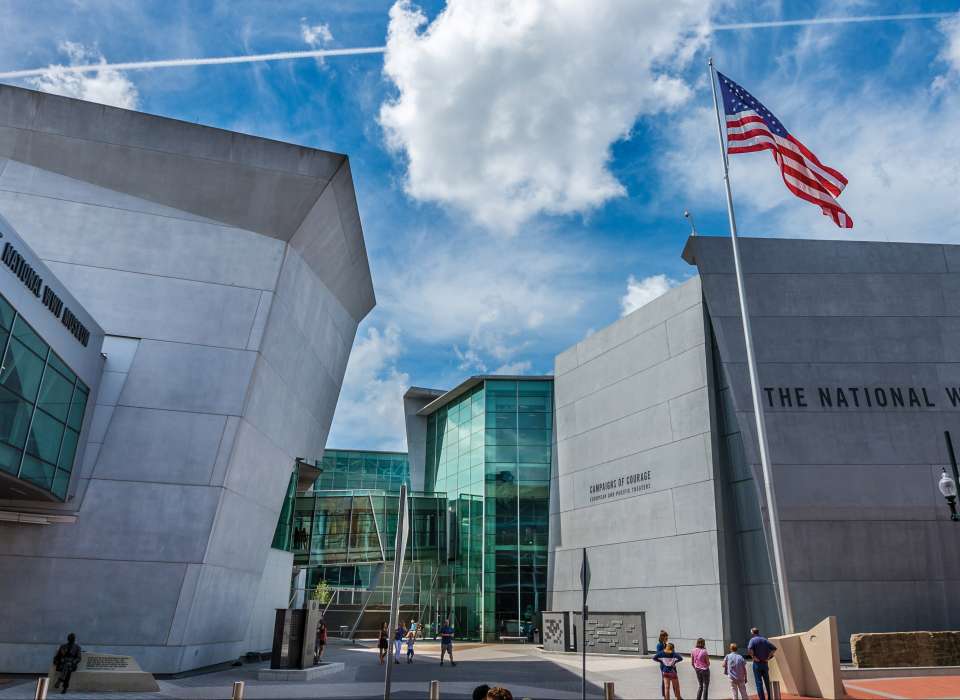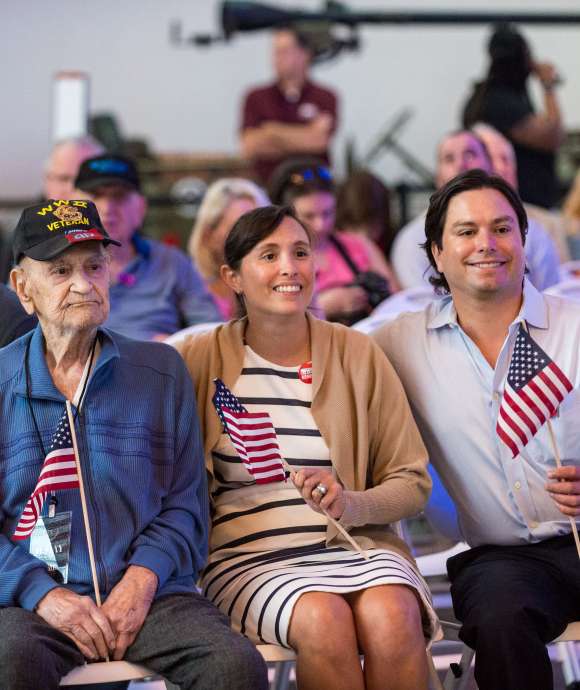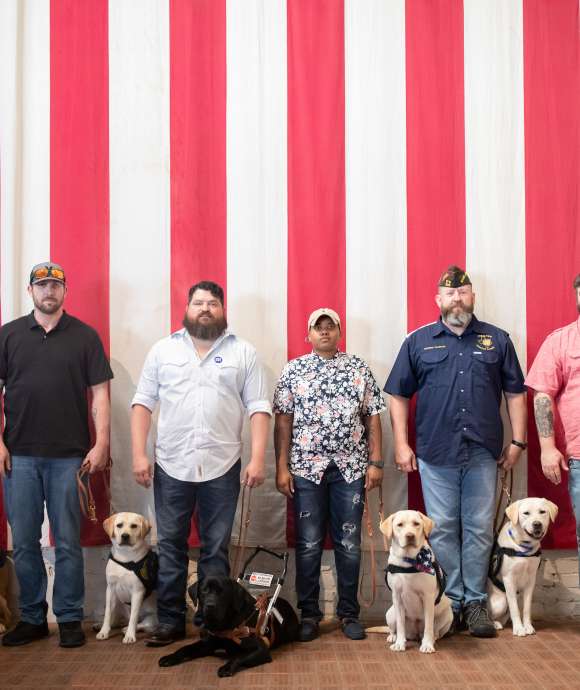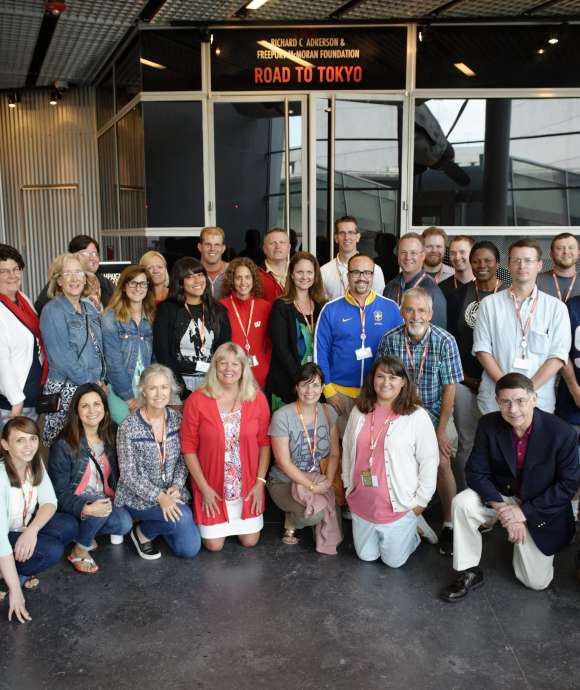Named by TripAdvisor as the #1 Attraction in New Orleans, The National WWII Museum tells the story of the American experience in the war that changed the world—why it was fought, how it was won, and what it means today—so that all generations can understand the price of freedom and be inspired by what they learn.


-
 Learn More
Learn MoreBuy Tickets
-
 Learn More
Learn MoreExplore The Museum
-
 Learn More
Learn MoreStay On Our Campus
-
 Learn More
Learn MoreFrequently Asked Questions
-
 Learn More
Learn MoreDining Options
Hours & Information
Museum Exhibits and Museum Store
Open daily, 9:00 a.m. – 5:00 p.m.
Closed Mardi Gras Day, Thanksgiving Day, Christmas Eve, and Christmas Day.
Beyond All Boundaries
Daily showings, 48-minute experience, 10:00 a.m. – 4:00 p.m.
Shows start at the top of the hour.
The Priddy Family Freedom Theater
Daily showings, 30-minute experience, 10:00 a.m. – 4:00 p.m.
Shows run twice an hour.
Final Mission: USS Tang Submarine Experience
Daily showings, 15-minute experience, 10:00 a.m. – 4:00 p.m.
Included in General Admission.
Expressions of America
Available on select nights, 60-minute experience, outdoor sound and light show.
Pricing
| Adult | $35 |
| Senior (65+) | $32 |
| Student (With ID) | $25 |
| Child (K-12th) | $25 |
| Military (With ID) | $25 |
| Accessibility | $25* |
| WWII Veterans | FREE |
| Members | FREE |
| Beyond All Boundaries | $11 |
| Freedom Theater | $11 |
| Final Mission | FREE |
| Second-Day Pass | $11 |
| Expressions of America | $11–$79 |
Click here for more Information about Museum access for visitors with accessibility needs.
Directions
The Museum is located in New Orleans’s Historic Warehouse District on Andrew Higgins Drive between Magazine and Camp Streets.
Parking
The Museum's parking garage is located at 1024 Magazine Street. This portion of Magazine Street is a one-way, and the garage is located on the left side.
Parking Rates
0–1 Hours
$8
1–3 Hours
$15
3–7 Hours
$20
7–12 Hours
$25
12–24 Hours
$50
The parking garage cannot accommodate motorcycles or any vehicle over 6'8" tall. There are several paid surface lots in the neighborhood, some not owned by the Museum, which can accommodate oversized vehicles and motorcycles:
- Premium Parking Lot
-Located on the corner of Camp and Andrew Higgins Street - Premium Parking Lot
-Located on the corner of St. Joseph and Magazine Street - SP + Parking Lot
-Located on the corner of St. Joseph and Magazine Street
RV Parking Accommodations
At this time we do not offer on-campus parking for RV’s, motor homes, or vehicles pulling trailers. Please see below for information regarding off-campus RV parking options.
Basin St. Station
French Quarter RV Resort
For questions or further information, contact us at parking@nationalww2museum.org.
Explore The Museum
Incredible Immersive Galleries
Explore More-
 Learn More
Learn MoreRoad to Berlin
-
 Learn More
Learn MoreRoad to Tokyo
-
 Learn More
Learn MoreAresenal of Democracy
-
 Learn More
Learn MoreLiberation Pavilion
-
 Learn More
Learn MoreSpecial Exhibits
-
 Learn More
Learn MoreSee More
Add On Experiences
Enhance your visit to The National WWII Museum with one of our state-of-the-art multimedia experiences.
Use Our Itineraries to Customize Your Visit
See Them All-
 Learn More
Learn MoreHalf-day Itinerary
-
 Learn More
Learn MoreFull-day Itinerary
-
 Learn More
Learn MoreTwo-day Itinerary
Museum Tours
Expand your visit to The National WWII Museum on an exclusive guided tour! Each tour takes you on a different adventure where a curator will display and explain WWII artifacts not currently on view in the Museum.
Explore More
-
 Learn More
Learn MoreEvents Calendar
-
 Learn More
Learn MoreAccessibility
-
 Learn More
Learn MoreGroups
Frequently Asked Questions
Admission
What is the price of general admission and what is included?
General admission prices range from $25.00 - $35.00 and include access to all exhibit buildings including any current special exhibits and the USS Tang Submarine Experience. It does not include access to Beyond All Boundaries, Freedom Theater, or Expressions of America. These experiences can be added on at point of sale for an additional cost.
Can I leave the Museum and return during the same day?
Yes. If you checked-in at Ticketing and received your Admission Pass, you are free to leave the Museum and return on the same day until 5pm.
Do I need to purchase tickets in advance?
We recommend that you purchase your tickets in advance to receive faster service, but you are welcome to purchase tickets onsite as well.
What are the prices of the add-ons?
Our main add-on experiences- Beyond All Boundaries and Freedom Theater are $11.00.
Do you have a 2-day ticket or a 3-day pass?
Yes. You can purchase a Second Day Pass within 7 days of your first purchase for $11.00. Our Best Value Package includes a Second Day Pass as well as our add-on experiences Beyond All Boundaries and Freedom Theater and will save you $8.00!
If you are considering touring the Museum for 3 or more days, you may want to purchase a Membership.
If I purchased tickets online, can I change the date of my visit?
We can usually accommodate requests for changes that are made in advance. Please call (504) 528-1944 x 0 or email info@nationalww2museum.org.
Do I need to print out my tickets?
No. You can show the QR code on your mobile device to receive entry.
Do you offer gift certificates?
Yes. Gift certificates for general admission are available here.
Do you offer refunds?
Daytime admission tickets to The National WWII Museum are non-refundable once purchased.
Discounts
I have a National Park Pass. Is the National WWII Museum included?
No. The National WWII Museum is not part of the National Park System and park passes are not valid for admission. The Museum is a private non-profit institution.
Do you offer an AAM (American Alliance of Museums) discount or discounted admission for employees of other museums?
Members of AAM and/or employees of other museums receive $5 off General Admission with valid credentials. The Museum is not affiliated with ICOM (International Council of Museums.)
Do you offer AAA or AARP discounts?
We do offer $2 off General Admission for AAA card holders. We do not have AARP discounts, but we do offer a Senior discount for those 65 years and older.
Do you offer military discounts?
Yes. Active or former military and their spouse receive $10 off general admission with proof of service. WWII veterans and one companion receive free admission.
Do you offer discounts for federal government employees, law enforcement, or first responders?
No, but we do offer discounts to active and former military.
Do you offer teacher discounts?
Discounts for educators are available when visiting as part of a school group.
Do you have reciprocity with other museums?
Reciprocal membership is available with the Pritzker Military Museum & Library in Chicago.
Preparing for Your Visit
What are your hours and when are you closed?
We are open 9am – 5pm, Monday – Sunday. We are only closed on Thanksgiving Day, Christmas Eve, Christmas Day, and Mardi Gras Day.
How much time should I spend at the Museum?
There is so much to see and do at the Museum. We recommend spending three or more hours. You can always break up your visit into multiple days as needed.
What are your busiest times of year?
We experience high visitation during the Fall and Spring months. We are also very busy the week between Christmas and New Years Day.
How do I get to the Museum?
The Museum can be reached by car, bus or streetcar, taxi, rideshare, or bike. Please see our Directions section above for more details.
Where should I park?
The official parking garage for the Museum and The Higgins Hotel is located at 1024 Magazine Street. Please see our parking section above for more details.
Where can I stay near the Museum?
We recommend staying at our on-campus hotel: The Higgins Hotel & Conference Center.
Should I bring a sweater?
The exhibits are kept cool for the safety of our artifacts and technical equipment. Many visitors do need a sweater while touring.
Do you have motorized scooters?
We only provide manual wheelchairs on a first-come, first-served basis. Motorized scooter rentals are not available, but they are allowed on campus. Visit our accessibility page to learn more.
Can I bring my pet?
Only service animals defined by the ADA are allowed on the Museum’s campus.
Are strollers allowed?
Yes. Compact strollers are allowed in the galleries.
During Your Visit
Are there places to eat at the Museum?
Yes. In the Museum enjoy breakfast, lunch, and snacks at the Jeri Nims Soda Shop, or enjoy lunch at The American Sector Restaurant & Bar. We also have several dining options at The Higgins Hotel for breakfast, lunch, dinner, or late-night drinks. More details available here.
Are food or drink allowed in the galleries?
Only bottled water with a secure lid is allowed in the galleries. Food is only allowed in the restaurants or ground level lobbies.
Can you store my luggage or backpack?
All persons and bags must first pass through a security checkpoint before entering the Museum. Rolling luggage can be stored at the Guest Services Desk based on available space, which is limited. Lockers are available for storing backpacks and other small items, but capacity is limited. You are allowed to tour the exhibits with small backpacks and purses.
Can I take pictures?
Photography without flash is allowed in the galleries. Recording is not allowed in the galleries or movies.
Are there benches throughout the galleries?
Limited bench seating is available throughout the galleries, but our campus is very large. Visitors who require frequent sitting may need one of our complimentary wheelchairs, or they may need to bring their own portable stool.
Is there a private space to breastfeed or pump on campus?
Mothers can breastfeed anywhere on campus, but a private Lactation Room & Quiet Space is available in the Kushner Restoration Pavilion.
How do I contact you if I lost something at the Museum?
Email info@nationalww2museum.org with a detailed description of the lost item which will be sent to the Security Department.
Tours
Do you have an audio tour?
No. The Museum does not have an audio guided tour.
Do you have docent tours?
Yes. We have several docent tours, which happen daily, and special behind-the-scenes experiences for an additional fee. Please see our Museum Tours page for more information.
Where do I meet for my docent tour?
After checking in at Ticketing, you can meet your tour guide at the “Customize Your Museum Experience” kiosk in the Louisiana Memorial Pavilion.
Do you provide accommodations for visitors who are blind/low vision or deaf/hard of hearing?
Do you offer tours in other languages?
We do not currently provide tours in other languages, but you can email accessibility@nationalww2museum.org to see if an accommodation can be made.
Do you offer special pricing for tour groups or school groups?
Museum History and Outreach Information
What does the "D" in D-Day mean?
The answer, like many answers in the field of history, is not so simple. Disagreements between military historians and etymologists about the meaning of D-Day abound. Here are just two explanations:
In Stephen Ambrose's D-Day, June 6, 1944: The Climactic Battle of World War II, he writes, "Time magazine reported on June 12 [1944] that "as far as the U.S. Army can determine, the first use of D for Day, H for Hour was in Field Order No. 8, of the First Army, A.E.F., issued on Sept. 20, 1918, which read, 'The First Army will attack at H-Hour on D-Day with the object of forcing the evacuation of the St. Mihiel salient.'" (p. 491)
In other words, the D in D-Day merely stands for Day. This coded designation was used for the day of any important invasion or military operation. For military planners (and later historians), the days before and after a D-Day were indicated using plus and minus signs: D-4 meant four days before a D-Day, while D+7 meant seven days after a D-Day.
Why is the Museum located in New Orleans?
New Orleans is home to the LCVP, or Higgins boat, the landing craft that brought US soldiers to shore in every major amphibious assault of World War II. Andrew Jackson Higgins and the 30,000 Louisiana workers of Higgins Industries designed, built and tested 20,000 Higgins boats in southeastern Louisiana during the war. Dwight Eisenhower once claimed that Higgins was "the man who won the war for us."
Learn more about Higgins Industries and Andrew Jackson Higgins here.
How is Dr. Stephen Ambrose connected to the Museum?
The late Dr. Stephen Ambrose was the founder of The National WWII Museum. He spent decades researching and writing about the war, Eisenhower, and D-Day. As he collected more than 2,000 oral histories from D-Day veterans, he realized that the United States had no museum to honor these men and women and the people on the Home Front who made our victory in World War II possible. Ambrose was also the founder of the Eisenhower Center for American Studies at The University of New Orleans.
Do you have a database listing all D-Day Veterans?
No, but we do have some helpful tips on finding information about veterans.
How many World War II veterans are alive today?
Every day, memories of World War II—its sights and sounds, its terrors and triumphs—disappear. Yielding to the inalterable process of aging, the men and women who fought and won the great conflict are now in their late 80s and 90s. They are dying quickly—according to US Department of Veterans Affairs statistics, we are losing 348 veterans per day and only 496,777 of the 16 million Americans who served in World War II were alive in 2018.
This urgency guides the Museum in everything we do. Collecting the oral history of a veteran, donating an artifact, or contributing to the Museum are only a few of the ways you can help us to preserve the legacy of the Greatest Generation.
I have something from the war in my attic. Do you want it for the Museum?
Are the "Higgins Boats" in the Museum from World War II?
Less than 10 original LCVPs or “Higgins Boats” are known to exist today. The Museum’s LCVP was built by volunteers, many of whom were Higgins employees, from the original plans and contains some original parts like the ramp and the engine.
Our LCP(L) is an original Higgins built craft. It was restored to original condition by our volunteers, many of whom also helped build the LCVP.
Is the Museum part of the federal government?
No, The National WWII Museum is a private non-profit institution. We have received federal, state, and private funds for initial construction and the ongoing Road to Victory Expansion.
I want to tour Normandy. What should I go see?
Please look into our D-Day Tours or find out more about other World War II travel packages.
With three hundred seventy-five miles of beaches, cliffs, farming villages and ports, Normandy is a contrasting landscape of ancient fortresses and castles, ruined monasteries, and rolling farmland replete with memories of World War II and scarred with evidence of the Allied D-Day invasion of June 6, 1944. While there are many faces of Normandy, here are some basic suggestions for those travelers wishing to visit D-Day-related sites
Top Sites (from east to west):
Pegasus Bridge. Located on the Caen Canal, this key bridge was captured by British airborne troops in the early morning hours of D-Day, helping to secure the eastern flank of the invasion. Although the original bridge was taken down in 1994, a museum marks the site of this crucial coup de main operation.
“The Memorial and Museum of Peace.” Caen’s Battle of Normandy Museum offers guided tours of the landing beaches (British and American) along with a pass to the memorial. Caen is the site of the British breakout through German lines.
WWII Museum at Bayeux. While this town’s chief attraction is its 11th century tapestry honoring William the Conqueror’s victory at Hastings in 1066, the Musée Mémorial de la Bataille de Normandie 1944 paints a vivid picture of the Allied invasion and campaign in Normandy.
Arromanches. See the remnants of Mulberry B, one of two huge artificial harbors the Allies towed to Normandy from England. The Museum here has a great model, showing how the structure worked.
Omaha Beach. One of two beaches attacked by American forces on D-Day (the other is Utah Beach). Located near the town of St. Laurent, Omaha Beach was the bloodiest of the D-Day beaches. You can still see remnants of one of the Mulberries, or artificial harbors, the Allies built to support the invasion.
American Military Cemetery at St. Laurent. Stretching across the bluff overlooking Omaha Beach, the rows of white marble crosses and stars commemorate the men who died fighting for the Allied victory in Normandy. A must see.
Pointe-du-Hoc. The elite US Rangers scaled this 40-meter high cliff between Omaha and Utah beaches to neutralize a dangerous German gun battery. Check out the cliffs, the ruins of German bunkers, the bomb craters, and see if they were successful.
St.-Lô. In the town where the Americans finally broke through the German lines, the Holy Cross Church is home to a memorial to Maj. Thomas Howie, who had vowed to be the first American in St.-Lô. He was killed shortly before his troops took the city.
Utah Beach. The area around Utah Beach contains monuments, abandoned tanks, and pillboxes— reminders of D-Day. The Musée du Débarquement, near La Madeleine, is located in a German bunker, and offers striking accounts of the battle for Normandy.
Ste-Mère-Eglise. In this town taken by the US Airborne on D-Day, the Musée des Troupes Aéroportées includes photos, a glider, and parachutes commemorating the morning of June 6, 1944 when American paratroopers dropped over the town to secure the western flank of the invasion.
Recommended Travel Books:
The Visitor's Guide to Normandy Landing Beaches by Holt, Tonie and Valmai
AAA Essential Normandy: All You Need to Know by Nia Williams
Insight Compact Guide: Normandy by Manfred Braunger
A Traveler's Guide to D-Day and the Battle for Normandy by Carl Shilleto and Mike Tolhurst
Visitor Code of Conduct
To ensure a positive guest experience, we ask all guests to adhere to the following rules. Failure to comply may result in removal from Museum property, fines, or prosecution.
- Use of rude, loud, abusive, or derogatory language or acts towards another guest or staff member is not permitted. Disorderly conduct of any kind including aggressive verbal or physical behavior can result in immediate removal from Museum property.
- Attire must be appropriate- without profanity, nudity, or other offensive material. Shirts and shoes are required.
- Illegal drugs, firearms without a permit, and deadly or dangerous weapons are not allowed on campus.
- Damaging or removing Museum property or artifacts is not permitted. Guests cannot enter areas that are restricted to visitors. Stanchions or other barricades cannot be removed.
- Loitering, sleeping, or participating in unwarranted assemblies is not permitted. Solicitation of any kind is prohibited on campus.
- Personal photography without flash is allowed in the galleries. Recording is not allowed. Tripods or oversized equipment are not allowed on campus. Photography taken for advertisements or other commercial purposes is not allowed.
- Food or drink are not allowed in the galleries or near the artifacts. Water bottles with a secure lid are allowed. Smoking and use of electronic cigarettes is prohibited in all buildings and within 10 feet of doorways throughout campus.
- Smoking is not permitted anywhere on the Col. Battle Barksdale Parade Grounds.
- Service animals are welcome throughout the museum campus. Under the Americans with Disabilities Act (ADA), a service animal is defined as a dog that has been individually trained to do work or perform tasks for an individual with a disability. Pets are not permitted.
- Use of Unmanned Aircraft Systems (drones) is not permitted on Museum property without permission.
